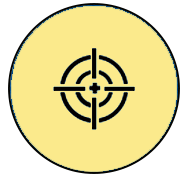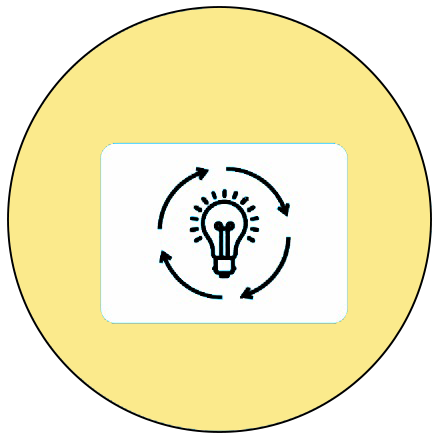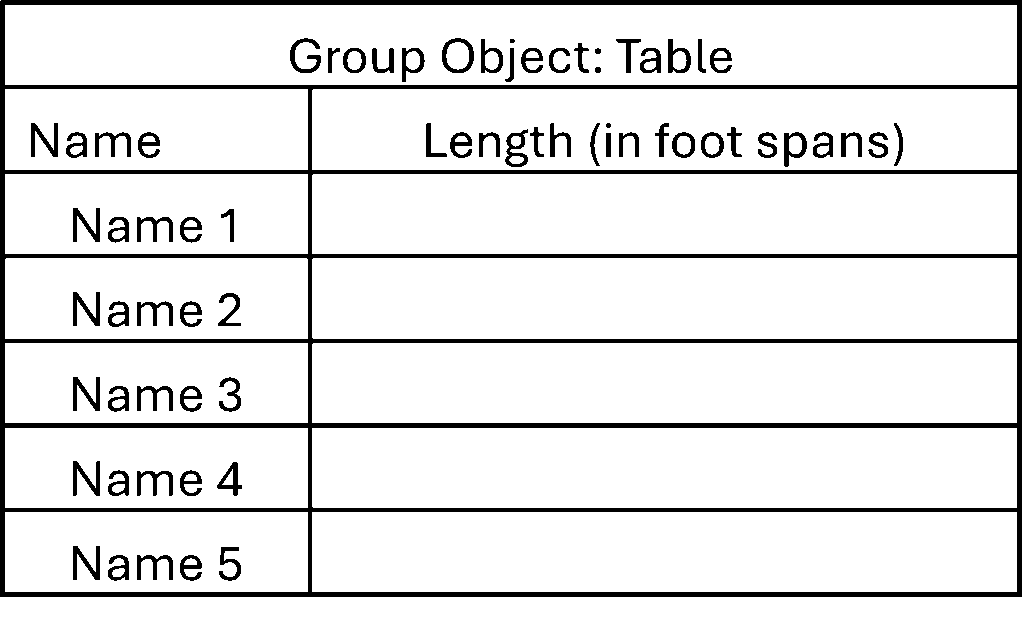
Measurement
Week 1 – Measure Length
Learning Outcome
Estimates short distance and length and verifies them using non-uniform and non-standard units (like hand spans and footsteps).
 Objective
Objective
Children will be able to measure an object’s length with nonstandard measuring tools like hand spans and footsteps.
 Prerequisites
Prerequisites
- Children can identify objects that are long or short and tall or short.
- The teacher can have a simple check for understanding at the beginning of the lesson by asking the children to identify the long or short and tall or short objects by showing flashcards or real objects.
 Pre-teach Vocabulary
Pre-teach Vocabulary
Children should be familiar with the terms long and short, tall and short, length, height, and compare.
Introduction
Materials required:
- Flashcards featuring images of objects that are long and short as well as tall and short.
- A long pencil and a short pencil; a long ribbon and a short ribbon.
- A few more long and short objects that are available in and around the classroom.
The teacher can show the flashcards and the real objects and ask the children to tell whether they are long or short or tall or short. Once the children understand the notions of long, tall, and short, the teacher announces that she will tell a narrative to explain the nonstandard measuring tools – hand span and foot span – for measuring the length of an object.
The teacher can then narrate the following story or present it on video.
Stretch your hand and measure your land!
On a pleasant Sunday morning, the sisters Sony and Toby were wandering through the garden when they decided to do some gardening. They found a rectangular patch of ground in the backyard and wanted to measure its length and width before deciding how many rose plants to plant.
Sony: Toby, our teacher told us that we can use our hands and feet in particular to calculate distance. I’ll use my hands to measure the dimensions of this plot of land. It measures 30 hand spans long and 20 hand spans wide.
Toby: Is it? Let me measure. It measures 34 hand spans long and 24 hand spans wide.
Sony: Hmm! Why is that?
Toby: Whoa! Why is it different?
Their friend, Rosy, comes running.
Rosy: What are you both doing here? Shall we go outside and play?
Toby: Rosy, we want to make a rose garden. Could you please use your hands to measure the width and length of the rose garden bed we wish to prepare?
Rosy: Oh! Sure. Hmm… It measures 27 hand spans in length and 17 hand spans in width.
Sony and Toby: Oh no!!! It can’t be. Let us ask our mother.
Sony: Mama, why are Toby’s hand span measurements different from mine? And Rosy’s too? Which is correct?
Mother: Children, All your measurements are correct. Your hand span measurements vary since your body structures are different. [Keeps one’s hand over the other and encourages them to compare the difference]. I’ll measure with my hand span and show you. It will also be different. It is 20 hand spans in length and 10 hand spans in width.
Sony, Toby, and Rosy: Our hands are small, and yours are big. Yes, each hand is unique, and hence hand span measurements vary. Now we understand, Mummy. Thank you, Mama.
Sony: Okay. Now let us make a decision.
They all run excitedly to start on the rose garden bed.
The teacher can demonstrate how to measure the length and width of her table using her hand span and instruct two children to measure the same dimensions with their own hand spans. Tabulate the measurements on the board and state that even if the measurements differ, they are all correct.
 Note to the teacher:
Note to the teacher:
The above narration can be shown through a video.
Video: Stretch your hand and measure your land! – Coming soon
ISL Video: Stretch your hand and measure your land! – Coming soon
Activity 1: Gauge with Tricky Hands!
Objective: To measure the length of objects using hand span and compare them.
Importance of the activity for children:
Helps in developing:
- Fine motor skills (Stretching fingers, hand-eye coordination)
- Gross motor skills (Sitting erect, measuring)
- Cognitive skills (Visual processing, counting, concentration)
- Social skills (Accepting others’ measurements)
- Language skills (Concept formation like “hand span, height, and length”)
- Emotional skills (Promotes a sense of achievement that boosts self-esteem, and encourages pride in learning new skills)
Resources required:
Pair of the same objects with different lengths. For example, a short stick and a long stick; short ribbons and long ribbons; short pencils and long pencils; short painting brushes and long painting brushes.
Setting for the activity:
The activity can be done indoors or outdoors, depending on the available space and the objects to be measured.
Type of activity: Individual activity
Preparation of activity:
The teacher should ensure that sufficient pairs of the same objects with different lengths are made available to the children.
Role of the teacher: Demonstrator, observer and facilitator
Procedure:
- Distribute the pair of objects with different lengths to each child. For example, give a small stick and a long stick to one child; another pair of sticks with different lengths to another child; similarly distribute pairs of ribbon, pairs of pencils etc. to other children. Every child should have a pair of the same object with varied lengths.
- Instruct the children to measure the length of the objects using their hand span.
- The teacher has to demonstrate first and explain what the hand span is.
- Tell the children to note down the length of the objects measured using their hand span in their notebook.
- Let each child loudly tell the length of the short object and the long object.
- Tell the children to exchange the pair of objects with others.
- Let the children repeat the measurement of the exchanged objects using their hand span.
- Let the children compare the outcome and note the differences in the measurement of the same objects by different children.
- Let the children discover that the measurements differ due to variances in their hand spans.
Observations:
- The children observe the differences in the measurement of the length of the same object using their hand span and another’s hand span.
- The teacher can note down his or her observations and guide the children accordingly. For example, if the child is still confused about how to use the hand span, the teacher can assist the child by demonstrating how to use the hand span to measure dimensions of the objects.
Suggested Variation in th activity:
The children can measure the height of other children using handspan and observe the differences.
Conclusion:
Children would be able to measure the length of objects with their hand spans. They will comprehend that the same object will have a different length/height when measured by another child due to differences in their hand span. Children will recognise that the hand span is an approximate measurement instrument.
Video: Gauge with tricky hands! – Coming soon
ISL Video: Gauge with tricky hands! – Coming soon
Activity 2: Trace Your Steps
Objective:
To measure the length of objects using their foot span.
Importance of the activity for children:
Helps in developing:
- Fine motor skills (Measuring, hand-eye coordination)
- Gross motor skills (Walking while measuring)
- Cognitive skills (Visual processing, concentration)
- Social skills (Accepting and appreciating others’ findings)
- Language skills (Concept formation like “foot span, length, and compare”)
- Emotional Skills (Promotes a sense of achievement that boosts self-esteem and encourages pride in learning new skills)
Resources required:
Objects in and around the classroom can be identified and used.
For example, teacher’s table, classroom wall, chair, study desk, or just the distance between two objects kept in the playground etc.
Setting for the activity:
The activity can be done indoors or outdoors depending on the available space and the objects chosen for the activity.
Type of activity: Group activity
Preparation of activity:
The teacher can identify the objects in and around the classroom whose length can be measured using foot span.
Role of the teacher: Demonstrator, observer and facilitator.
Procedure:
- Divide the class into small groups depending on the number of children in the class.
- Identify at least 5 objects and make five groups. The number in each group may vary according to the total number of students in the class.
- Explain that each child in the group has to measure the object given to them, using their foot span and tabulate the length as: (Tabulation can be done on a sheet of paper or on the blackboard.)

Note: The length of the table can be measured by marking the distance between the legs of the table.
- Once the group has completed the activity, the members of the group can discuss the reason for the differences in the length of the same object.
Observation:
- The children observe the differences in the measurement of the length of the same object using their foot span and another’s foot span.
- The teacher can note down his or her observations and guide the children accordingly. For example, if the child is still confused about how to use the foot span, he or she can assist the child by demonstrating how to use the foot span to measure the dimensions of the objects.
Suggested Variation in the activity:
Children can be encouraged to guess the length of different objects in the environment and then measure the length using their foot span and compare the result.
Conclusion:
Children would be able to measure the length of objects using their foot span. They will understand that the same object will show different lengths if measured by another child due to different foot spans. Children will understand that foot span is an approximate measurement tool.
Video: Trace your Steps – Coming soon
ISL Video: Trace your Steps – Coming soon
Assessment:
The teacher can provide assessment worksheets 1 and 2 to assess the children’s understanding of the concept of measuring length.
Assessment Worksheet 1 – Coming soon
Assessment Worksheet 1 (Enlarged) – Coming soon
Assessment Worksheet 2 – Coming soon
Assessment Worksheet 2 (Enlarged) – Coming soon
Check list for teachers:
| Activity | Yes | No | Sometimes |
| Children can: | |||
| Measure the distance between two points | |||
| Compare the lengths of objects | |||
| Guess the length of objects | |||
| Identify tall and short objects | |||
| Complete the activity in the given time | |||
| Do the activity independently | |||
| Express verbally and through actions, expressions or gestures | |||
| Enjoy teamwork, appreciate others and are willing to learn from others |
Home Activity
Identify 10 objects in and around your house. Measure its length using your foot span. Record your observations. Identify the longest and shortest object.
Worksheet: Measure and record – Coming soon
Worksheet: Measure and record (Enlarged) – Coming soon
Cross-Curricular Connection:
- In Physical Education class:
Children can use their foot span to measure the length of a running track, which can also be done as a walking exercise. The teacher should explain that all answers are correct and differences in measurement are due to differences in bodily structures. - In art class:
Outlines of various objects can be given with the instruction to colour the objects that can be measured using hand span in one colour and foot span in another colour.
Adaptations for addressing learner variability: Adaptations and strategies – Coming soon
Teacher Resource Document – Coming Soon
| Source and Attribution of images: All images used in the above Assets and Aids are originally created. |
| This digital material has been developed by the Sri Sathya Sai Vidya Vahini Inclusive Education Project, a unit of Sri Sathya Sai Central Trust, Prasanthi Nilayam, as a collaborative offering in the service of our nation. |